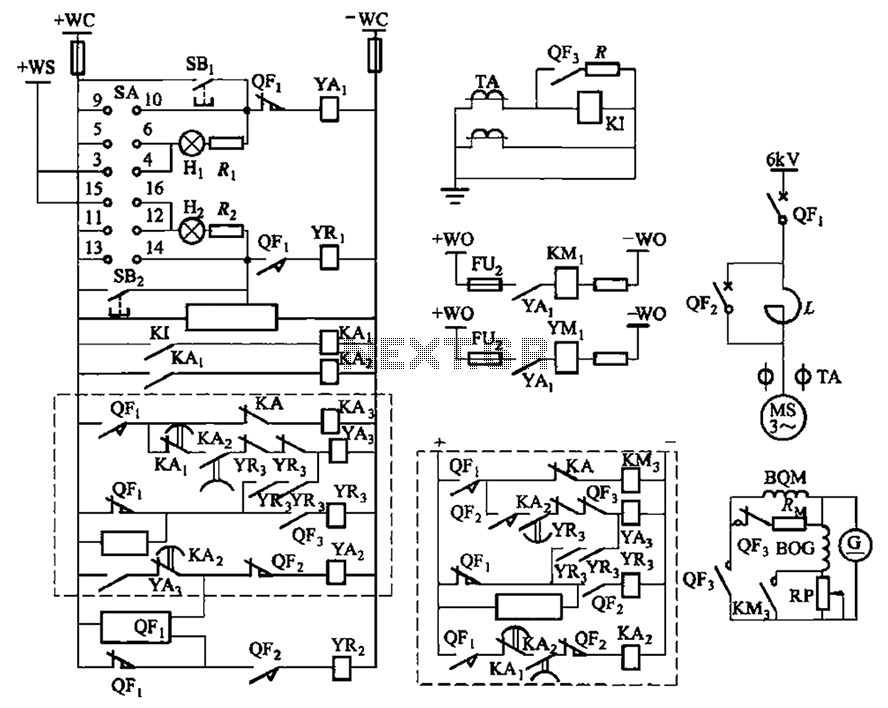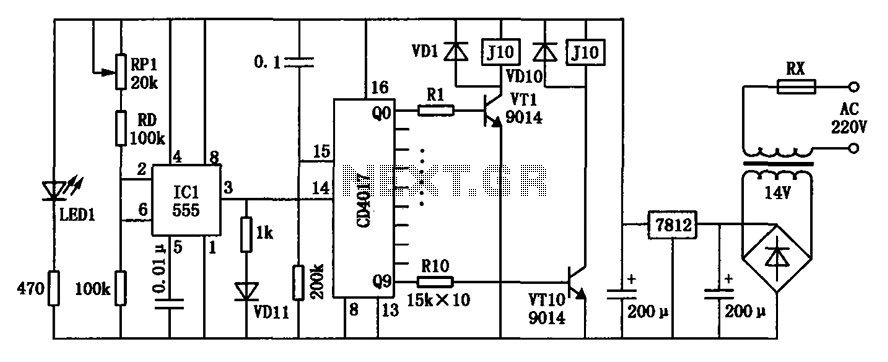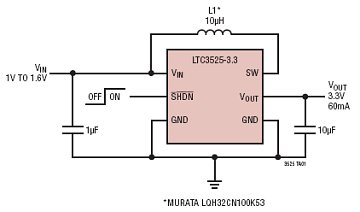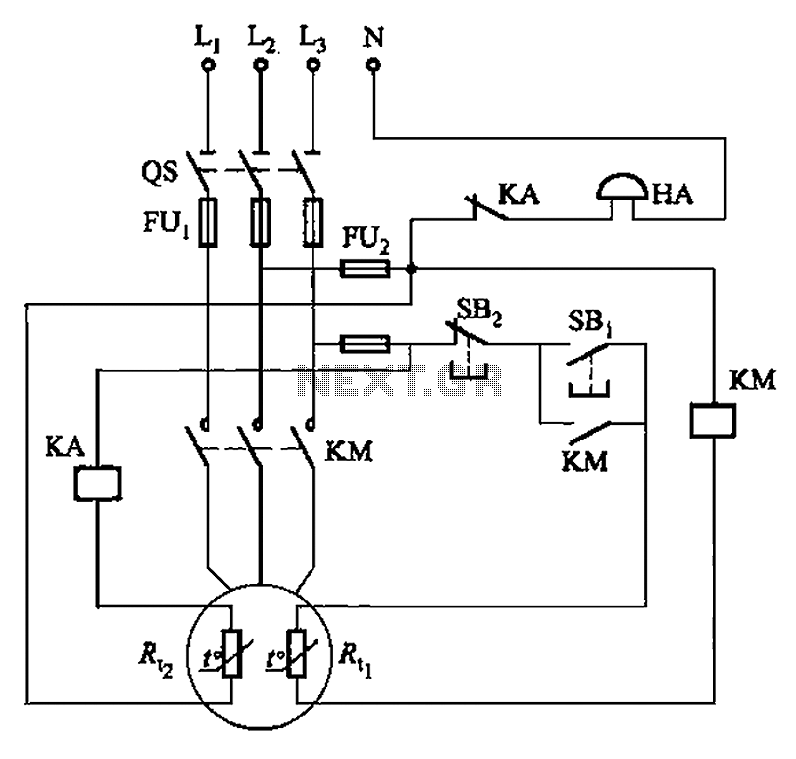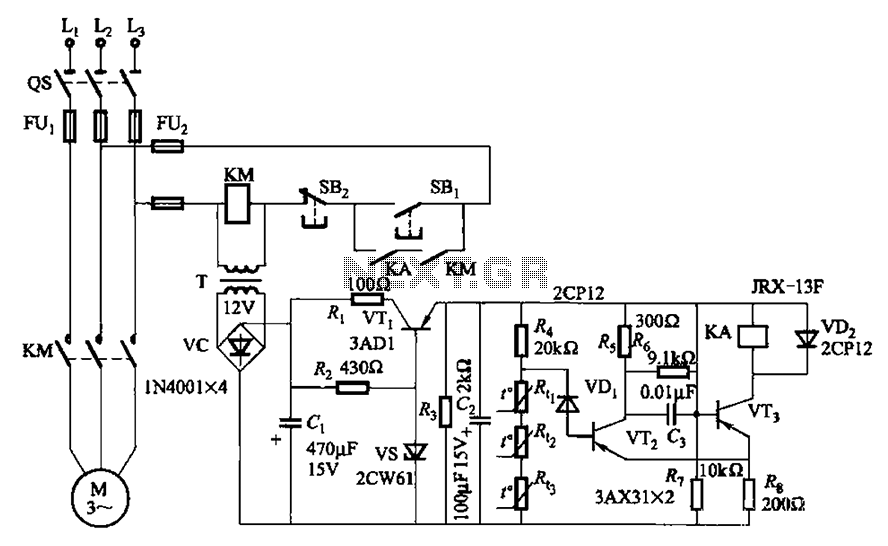
Synchronous Counters
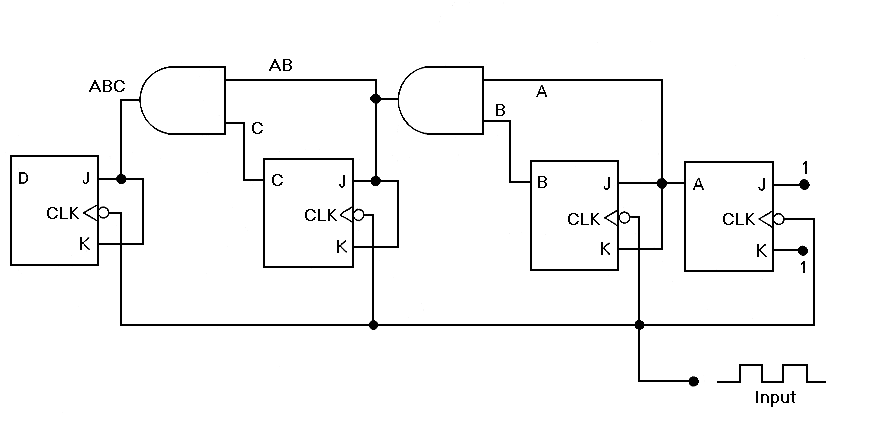
The material is presented as a teaching tool aimed at enhancing understanding and interest in the design of counters. According to R. S. S. Obermann, the design of counters serves as an excellent proving ground for individuals who have mastered Boolean algebra. A synchronous binary counter counts from 0 to 2^N-1, where N represents the number of bits or flip-flops in the counter. Each flip-flop corresponds to one bit. The flip-flop in the lowest-order position toggles with every clock pulse, while a flip-flop in any other position toggles on the next clock pulse if all the bits in the lower-order positions are set to 1. For instance, when A4 A3 A2 A1 = 0011, the next count results in A4 A3 A2 A1 = 0100. A1, being the lowest-order bit, is always toggled. A2 toggles because all lower-order bits (only A1 in this case) are 1's, and A3 toggles because all lower-order bits, A2 and A1, are 1's. However, A4 does not toggle since the lower-order bits, A3 A2 A1 = 011, do not satisfy the all-1 condition. To implement a synchronous counter, a flip-flop is required for each bit, along with an AND gate for every bit except the first and last. The diagram illustrates a 4-bit synchronous up-counter. Although the counter is synchronous and intended to change simultaneously, there is a propagation delay through the AND gates, which accumulates based on the number of bits in the counter. To mitigate this issue, outputs from the flip-flops can be fed directly into a many-input AND gate. While this method resolves the additive propagation delay problem, it introduces new challenges. For instance, the third flip-flop receives its J-K input from a 2-input AND gate, while the fourth flip-flop obtains its input from a 3-input AND gate, and so forth. In a 16-bit counter, this approach requires significantly more resources than the initial method. Furthermore, in the first method, the output from each flip-flop serves as an input to only one AND gate, whereas in the second method, each flip-flop's output connects to all higher-order bits. In a 12-bit counter, the output of the first flip-flop would need to drive 10 gates (known as fan-out), which may exceed the output power capability of the flip-flop. A compromise between the two methods can be implemented. For a 12-bit counter, it can be organized into 3 groups of 4 bits. Within each group, the second method is used, while the first method is applied between the groups. This arrangement results in a manageable overall gate propagation delay and a maximum fan-out of 3 instead of 10, using the first and second methods, respectively. Various types of binary counters exist beyond the basic binary up counter, including binary down counters, binary up/down counters, and binary-coded-decimal (BCD) counters. Any counter that operates in binary is classified as a binary counter. In a binary up counter, a specific bit, excluding the first, toggles if all lower-order bits are 1's, while the opposite occurs for binary down counters, where a specific bit toggles if all lower-order bits are 0's, with the first bit toggling on every pulse. For example, when A4 A3 A2 A1 = 0100, the next count yields A4 A3 A2 A1 = 0011. A1, the lowest-order bit, is consistently toggled. A2 toggles because all lower-order bits (only A1 in this instance) are 0's, and A3 toggles for the same reason, while A4 does not toggle since the lower-order bits A3 A2 A1 = 011 do not meet the all-0 condition.
A synchronous binary counter is a fundamental digital circuit used in various applications such as frequency division, digital clocks, and event counting. The design involves the interconnection of flip-flops and combinational logic gates to achieve the desired counting sequence. The counter's operation is dictated by a clock signal, which synchronously triggers the state changes of the flip-flops.
In a typical implementation, each flip-flop is configured in a toggle mode, responding to the clock pulses. The first flip-flop toggles on every clock pulse, while subsequent flip-flops change their state based on the outputs of lower-order flip-flops. This cascading effect creates a binary counting sequence. The use of AND gates to determine when to toggle higher-order flip-flops is crucial for maintaining the synchronous nature of the counter.
To visualize this, consider a 4-bit synchronous up-counter. It consists of four flip-flops (FF0, FF1, FF2, FF3) and three AND gates. The output of FF0 feeds directly to the clock input of FF1, while the outputs of FF0 and FF1 are combined in an AND gate to control the clock input of FF2. Similarly, the outputs of FF0, FF1, and FF2 are fed into another AND gate to control FF3. This arrangement ensures that all flip-flops toggle simultaneously when the conditions are met.
The propagation delay through the AND gates can impact the overall speed of the counter. To mitigate this, designers may implement techniques such as hierarchical structuring, where groups of flip-flops are managed separately to reduce fan-out and propagation delay. This approach allows for efficient resource utilization while maintaining the synchronous operation of the counter.
In summary, the design of synchronous binary counters is a complex yet rewarding endeavor that combines the principles of digital logic and Boolean algebra. The understanding of flip-flops, propagation delays, and combinational logic is essential for creating efficient counting circuits that can be utilized in a wide range of electronic applications.The material is presented in a manner suitable for a teaching tool. It seeks to enlighten and to spark off interest in the design of counters. As R. S. S Obermann remarks ". design of counters has, in my experience, always been an excellent proving ground for anyone who has mastered Boolean algebra. Have fun reading ! A synchronous binary counter counts from 0 to 2N-1, where N is the number of bits/flip-flops in the counter. Each flip-flop is used to represent one bit. The flip-flop in the lowest-order position is complemented/toggled with every clock pulse and a flip-flop in any other position is complemented on the next clock pulse provided all the bits in the lower-order positions are equal to 1. Take for example A4 A3 A2 A1 = 0011. On the next count, A4 A3 A2 A1 = 0100. A1, the lowest-order bit, is always complemented. A2 is complemented because all the lower-order positions (A1 only in this case) are 1`s. A3 is also complemented because all the lower-order positions, A2 and A1 are 1`s. But A4 is not complemented the lower-order positions, A3 A2 A1 = 011, do not give an all 1 condition.
To implment a synchronous counter, we need a flip-flop for every bit and an AND gate for every bit except the first and the last bit. The diagram below shows the implementation of a 4-bit synchronous up-counter. From the diagram above, we can see that although the counter is synchronous and is supposed to change simultaneously, we have a propagation delay through the AND gates which add up to give an overall propagation delay which is proportional to the number of bits of the counter.
To overcome this problem, we can feed the outputs from the flip-flops directly to a many-input AND gate as follows : This method does overcomes the problem of additive propagation delay but introduces some other problem of its own. From the diagram above, we can see that the third flip-flop gets its J-K input from the output of a 2-input AND gate and the fourth flip-flop gets its input from a 3-input AND gate and so on.
If we have a counter that counts to for example 16 bits, we will need to have : This method obviously usus a lot more resources than the first method. Not only that, in the first method, the output from each flip-flop is only used as an input to one AND gate.
In the second method, the output from each flip-flop is used as an input to all the higher-order bits. If we have a 12-bit counter, the output of the first flip-flop will have to drive 10 gates (called fan-out.
The output from the flip-flop may not have the power to do this. The "solution" to this is to use a compromise between the two methods. Say we have a 12-bit counter, we can organise it into 3 groups of 4. Within each group of 4, we use the second method and between the 3 groups, use the first method. This way, we only have an overall gate propagation delay and a maximum fan-out of 3 instead of 10 using the first and second method respectively. There are many variations to the basic binary counter. The one described above is the binary up counter (counts upwards). Besides the up counter, there is the binary down counter, the binary up/down counter, binary-coded-decimal (BCD) counter etc.
Any counter that counts in binary is called a binary counter. In a binary up counter, a particular bit, except for the first bit, toggles if all the lower-order bits are 1`s. The opposite is true for binary down counters. That is, a particular bit toggles if all the lower-order bits are 0`s and the first bit toggles on every pulse.
Taking an example, A4 A3 A2 A1 = 0100. On the next count, A4 A3 A2 A1 = 0011. A1, the lowest-order bit, is always complemented. A2 is complemented because all the lower-order positions (A1 only in this case) are 0`s. A3 is also complemented because all the lower-order positions, A2 and A1 are 0`s. But A4 is not complemented the lower-order positions, A3 A2 A1 = 011, do not give an all 0 condition. The implemen 🔗 External reference
A synchronous binary counter is a fundamental digital circuit used in various applications such as frequency division, digital clocks, and event counting. The design involves the interconnection of flip-flops and combinational logic gates to achieve the desired counting sequence. The counter's operation is dictated by a clock signal, which synchronously triggers the state changes of the flip-flops.
In a typical implementation, each flip-flop is configured in a toggle mode, responding to the clock pulses. The first flip-flop toggles on every clock pulse, while subsequent flip-flops change their state based on the outputs of lower-order flip-flops. This cascading effect creates a binary counting sequence. The use of AND gates to determine when to toggle higher-order flip-flops is crucial for maintaining the synchronous nature of the counter.
To visualize this, consider a 4-bit synchronous up-counter. It consists of four flip-flops (FF0, FF1, FF2, FF3) and three AND gates. The output of FF0 feeds directly to the clock input of FF1, while the outputs of FF0 and FF1 are combined in an AND gate to control the clock input of FF2. Similarly, the outputs of FF0, FF1, and FF2 are fed into another AND gate to control FF3. This arrangement ensures that all flip-flops toggle simultaneously when the conditions are met.
The propagation delay through the AND gates can impact the overall speed of the counter. To mitigate this, designers may implement techniques such as hierarchical structuring, where groups of flip-flops are managed separately to reduce fan-out and propagation delay. This approach allows for efficient resource utilization while maintaining the synchronous operation of the counter.
In summary, the design of synchronous binary counters is a complex yet rewarding endeavor that combines the principles of digital logic and Boolean algebra. The understanding of flip-flops, propagation delays, and combinational logic is essential for creating efficient counting circuits that can be utilized in a wide range of electronic applications.The material is presented in a manner suitable for a teaching tool. It seeks to enlighten and to spark off interest in the design of counters. As R. S. S Obermann remarks ". design of counters has, in my experience, always been an excellent proving ground for anyone who has mastered Boolean algebra. Have fun reading ! A synchronous binary counter counts from 0 to 2N-1, where N is the number of bits/flip-flops in the counter. Each flip-flop is used to represent one bit. The flip-flop in the lowest-order position is complemented/toggled with every clock pulse and a flip-flop in any other position is complemented on the next clock pulse provided all the bits in the lower-order positions are equal to 1. Take for example A4 A3 A2 A1 = 0011. On the next count, A4 A3 A2 A1 = 0100. A1, the lowest-order bit, is always complemented. A2 is complemented because all the lower-order positions (A1 only in this case) are 1`s. A3 is also complemented because all the lower-order positions, A2 and A1 are 1`s. But A4 is not complemented the lower-order positions, A3 A2 A1 = 011, do not give an all 1 condition.
To implment a synchronous counter, we need a flip-flop for every bit and an AND gate for every bit except the first and the last bit. The diagram below shows the implementation of a 4-bit synchronous up-counter. From the diagram above, we can see that although the counter is synchronous and is supposed to change simultaneously, we have a propagation delay through the AND gates which add up to give an overall propagation delay which is proportional to the number of bits of the counter.
To overcome this problem, we can feed the outputs from the flip-flops directly to a many-input AND gate as follows : This method does overcomes the problem of additive propagation delay but introduces some other problem of its own. From the diagram above, we can see that the third flip-flop gets its J-K input from the output of a 2-input AND gate and the fourth flip-flop gets its input from a 3-input AND gate and so on.
If we have a counter that counts to for example 16 bits, we will need to have : This method obviously usus a lot more resources than the first method. Not only that, in the first method, the output from each flip-flop is only used as an input to one AND gate.
In the second method, the output from each flip-flop is used as an input to all the higher-order bits. If we have a 12-bit counter, the output of the first flip-flop will have to drive 10 gates (called fan-out.
The output from the flip-flop may not have the power to do this. The "solution" to this is to use a compromise between the two methods. Say we have a 12-bit counter, we can organise it into 3 groups of 4. Within each group of 4, we use the second method and between the 3 groups, use the first method. This way, we only have an overall gate propagation delay and a maximum fan-out of 3 instead of 10 using the first and second method respectively. There are many variations to the basic binary counter. The one described above is the binary up counter (counts upwards). Besides the up counter, there is the binary down counter, the binary up/down counter, binary-coded-decimal (BCD) counter etc.
Any counter that counts in binary is called a binary counter. In a binary up counter, a particular bit, except for the first bit, toggles if all the lower-order bits are 1`s. The opposite is true for binary down counters. That is, a particular bit toggles if all the lower-order bits are 0`s and the first bit toggles on every pulse.
Taking an example, A4 A3 A2 A1 = 0100. On the next count, A4 A3 A2 A1 = 0011. A1, the lowest-order bit, is always complemented. A2 is complemented because all the lower-order positions (A1 only in this case) are 0`s. A3 is also complemented because all the lower-order positions, A2 and A1 are 0`s. But A4 is not complemented the lower-order positions, A3 A2 A1 = 011, do not give an all 0 condition. The implemen 🔗 External reference
